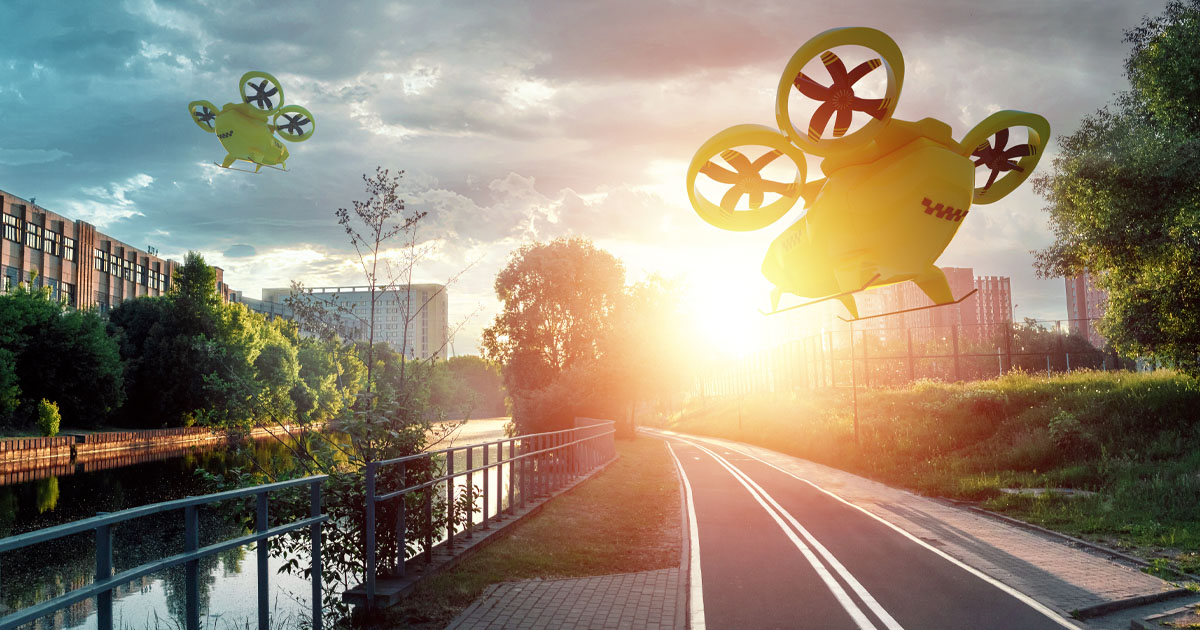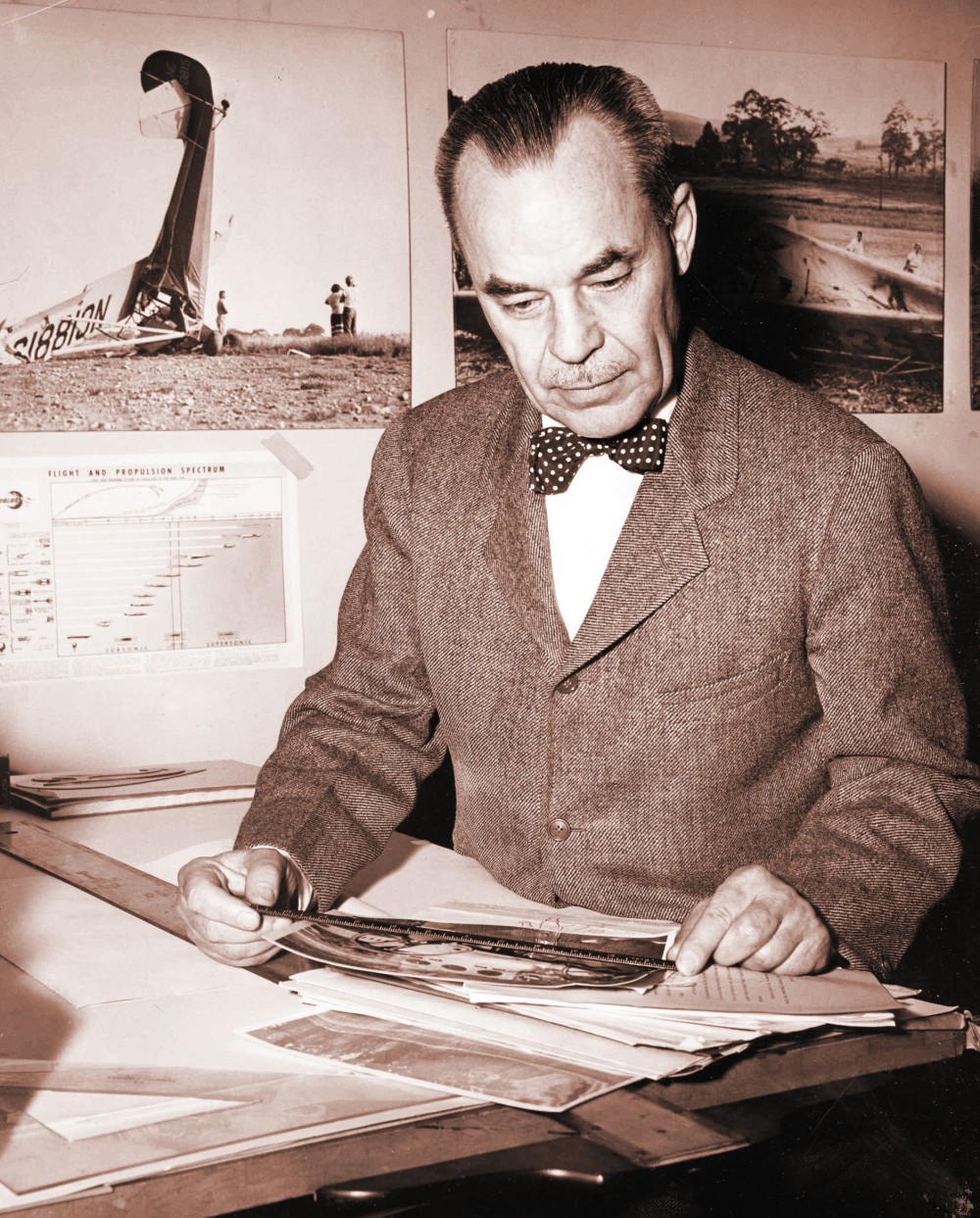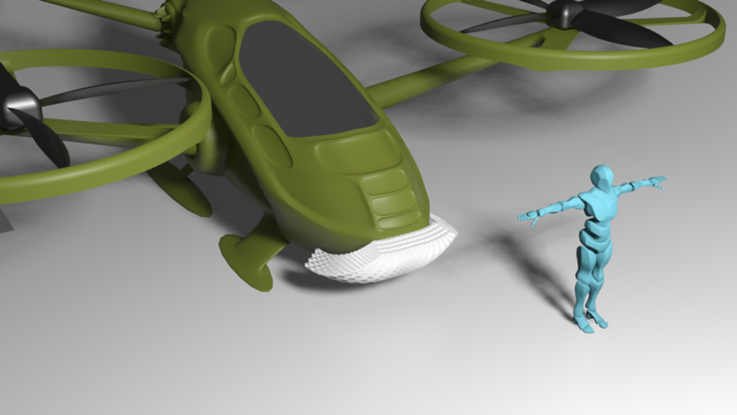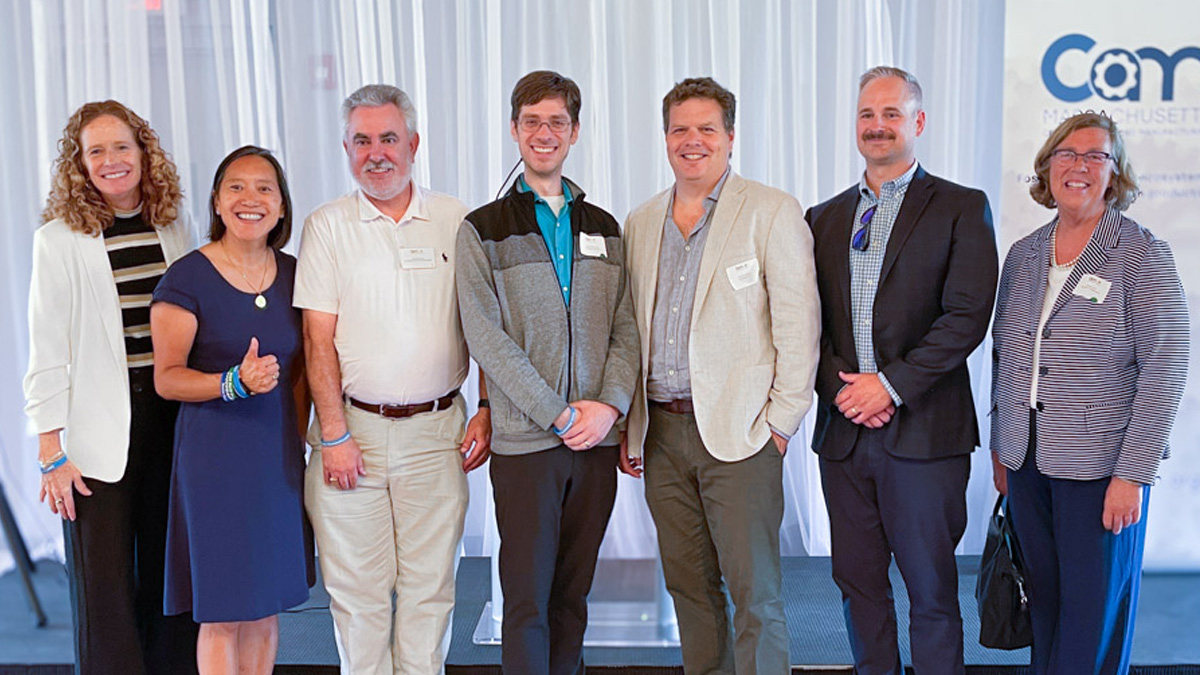
As new types of aerospace vehicles are invented, how do we keep occupants and cargo safe in the event of a crash?
In 1917, two military planes collided mid-air while undertaking training operations over Texas. One of the pilots was Hugh DeHaven, an American volunteer in the Canadian Royal Flying Corps. He survived, but broke both legs and suffered serious internal injuries that required months of rehabilitation. The other pilot, somehow, walked away unharmed.

Hugh DeHaven (copyright unknown).
DeHaven spent his recovery time thinking about why he had been so terribly unlucky, while the other pilot had come away unscathed. He concluded that his safety belt had been the cause of the bodily harm – the exact opposite of what it should have been doing: keeping him safe.
Fascinated with improving aviation safety, DeHaven began studying crash victims and survivors, and conducting experiments on what was to become the field of crashworthiness.
What is crashworthiness?
Crashworthiness is the ability of a structure to protect its occupants during an impact. It’s a combination of design and materials; an attempt to decrease serious injuries and fatalities.
Think back to the egg drop test you might have done as a kid. If your egg survived intact, then you designed a crashworthy egg holder.
Determining crashworthiness
Vehicle safety, whether on the ground or in the air, can be assessed in two ways: prospectively (with computer modeling and experimentation) and retrospectively (by looking at crash outcomes).
Realizing that any improvements to vehicle structure or safety devices were limited by what forces the human body can withstand, DeHaven retrospectively studied people who had survived falls ranging from 50 to 150 feet (he couldn’t very well drop people, however willingly, from large heights and record the outcomes)1. It seems amazing that a human body can walk away from a 17-storey fall, but it happens.
DeHaven took the lessons learned from this study and others and began developing the concept of “packaging” vehicle occupants for improved safety in the case of an impact. In other words, how best to design the carton so that the eggs don’t break?
DeHaven’s four packaging principles
In 1952, he presented his four packaging principles of design3, all of which have an impact on crashworthiness. They are (paraphrased):
- The vehicle shouldn’t break open and spill out the occupants, and it shouldn’t collapse under reasonable or expected conditions.
- The vehicle can’t be made of weak materials and should protect the inside by yielding to and absorbing impact energy.
- People should be restrained so that they don’t hit the inside of the vehicle.
- Restraints (e.g. seatbelts) should transfer crash forces to the strongest parts of the human body (i.e. pelvis and ribcage).
As a result of his research, DeHaven worked on the design for the 3-point seatbelt, which was patented in 1955. It’s an invention that has doubtless saved countless lives.

The patent for combination shoulder and lap safety belts – or the 3-point seat belt.
Modern crashworthiness standards
Since DeHaven’s groundbreaking work in crash safety, aviation industry standards in the U.S. – including the Dynamic Performance Standards by the General Aviation Safety Panel – have been formally developed. In addition, the U.S. Army has its own aircraft survival guide, and the FAA and NASA carry out crash dynamics research.
On the ground, the Insurance Institute for Highway Safety (IIHS) and the National Highway Traffic Safety Administration (NHTSA) undertake crashworthiness research on ground transportation vehicles, such as cars and trucks.
Crashworthiness, it turns out, is a very important aspect of vehicle design.
Here’s a video that shows just how safer today’s cars are due to improvements in safety and material engineering:
Crashworthiness in aerospace today
Since DeHaven formed his four packaging principles in 1952, there have been huge leaps in crashworthiness across industries. But what about designing for a new type of vehicle, one that’s in the process of being invented? How to you make something crashworthy if it operates differently than today’s cars and planes?
Urban air mobility vehicles (UAMVs) are a new breed of aerospace craft. They will be able to take people and cargo over short distances – think urban air taxis, medical assistance vehicles, and even UAMVs for personal use.

Concept UAMV with front impact protection.
These transformative modes of flight are on their way, with about 50 concepts in development, all with different designs including multicopters, fixed-wing configuration with pivoting motors, tilt-wing craft, and even ones with wings that fold.
Automotive crashworthiness has benefitted from decades of research, with the exact types of crashes that happen most often pinned down, and impact absorbing technology designed accordingly. However, for UAMVs, we don’t know what the most likely crash scenarios are going to be. So what material technology would be most useful in an unknown crash situation?
Mechanical metamaterials for UAMV protection
Multiscale Systems’ research on crashworthy materials focuses on impact absorbing structures and systems, such as landing gear, fuselage, and seats. These components work together to provide strength and impact attenuation, effectively slowing down occupants during a crash with the goal of eliminating or reducing injury. Under SBIR Phase I and II contracts with NASA, we are optimizing the design of our mechanical metamaterials for improving UAMV crashworthiness.
Why develop a new material technology when impact-absorbing products already exist? A key feature of our lightweight technology is that it can absorb energy from any direction. Mechanical metamaterials for UAMV energy absorption are designed to be the best of both worlds between impact-resistant foams and crushable honeycomb. Our metamaterials absorb a lot of impact energy for their weight and can do so when hit from any direction, just like a foam. But they also do this without involving the large peak force associated with impact-absorbing honeycomb – and they can be deployed around complex curved surfaces.
Another feature unique to metamaterials is their auxetic behavior, meaning that under impact they not only shrink in the direction of the crash but also draw material in from the sides. Since more material is gathered during impact, the metamaterial more efficiently absorbs the energy of the crash. Watch this auxetic behavior in action:
While we can’t predict the future, we can at least plan for it. Mechanical metamaterials will be a game changer in the world of crash protection, replacing current solutions that don’t meet the elevated standards for crashworthiness in the new age of aerospace.
Notes
- Hugh DeHaven, “Mechanical analysis of survival in falls from heights of fifty to one hundred and fifty feet,” Injury Prevention, 6 (2000): 62-68, https://www.ncbi.nlm.nih.gov/pmc/articles/PMC1730592/pdf/v006p00062b.pdf.
- DeHaven “Survival in falls from heights,” 63.
- Carl E. Nash, Ph.D., “Hugh DeHaven DeHaven: Still Relevant for Rollovers,” Automotive Safety Research Institute, 2009, https://www.autosafetyresearch.org/pdfs/GovtIndmeet-DeHaven&R-O1-21-09kd3.pdf.
Related Posts
Latest Lab Notes

Press Release /
WORCESTER, Mass. (July 12, 2024) – Multiscale Systems to build new facilities, expand advanced manufacturing capabilities, and bring jobs to Worcester with grant investment.

News /
Multiscale Systems moves on as a finalist in the Department of Energy's Heliostat Prize.

Press Release /
WORCESTER, Mass. (November 20, 2023) – The U.S. Department of Energy has announced Multiscale Systems as one of nine semifinalists in their American-Made Heliostat Prize. The prize is designed to accelerate technology innovation of selected heliostat components.


 Karen Tisdell, Director of Communications, connects people to products, ideas, and experiences. She leads on all things communications at Multiscale, including branding, strategy, and content.
Karen Tisdell, Director of Communications, connects people to products, ideas, and experiences. She leads on all things communications at Multiscale, including branding, strategy, and content.